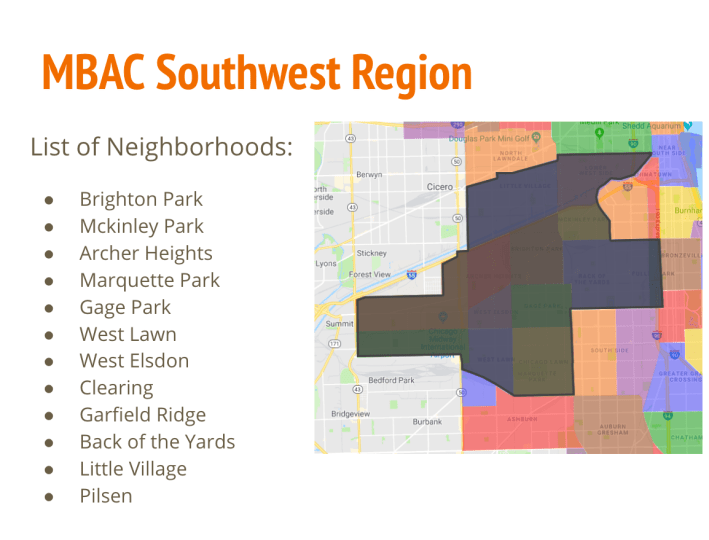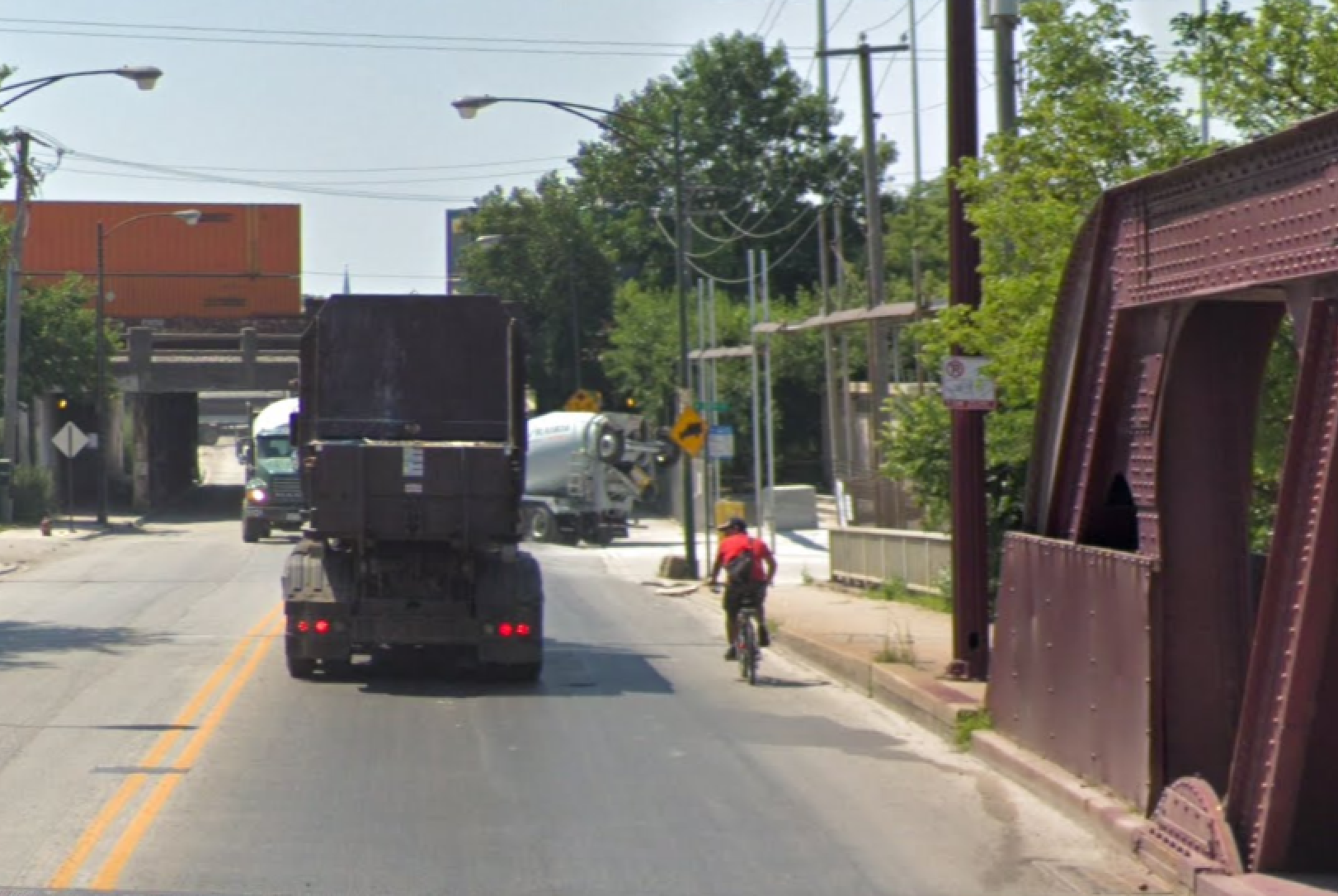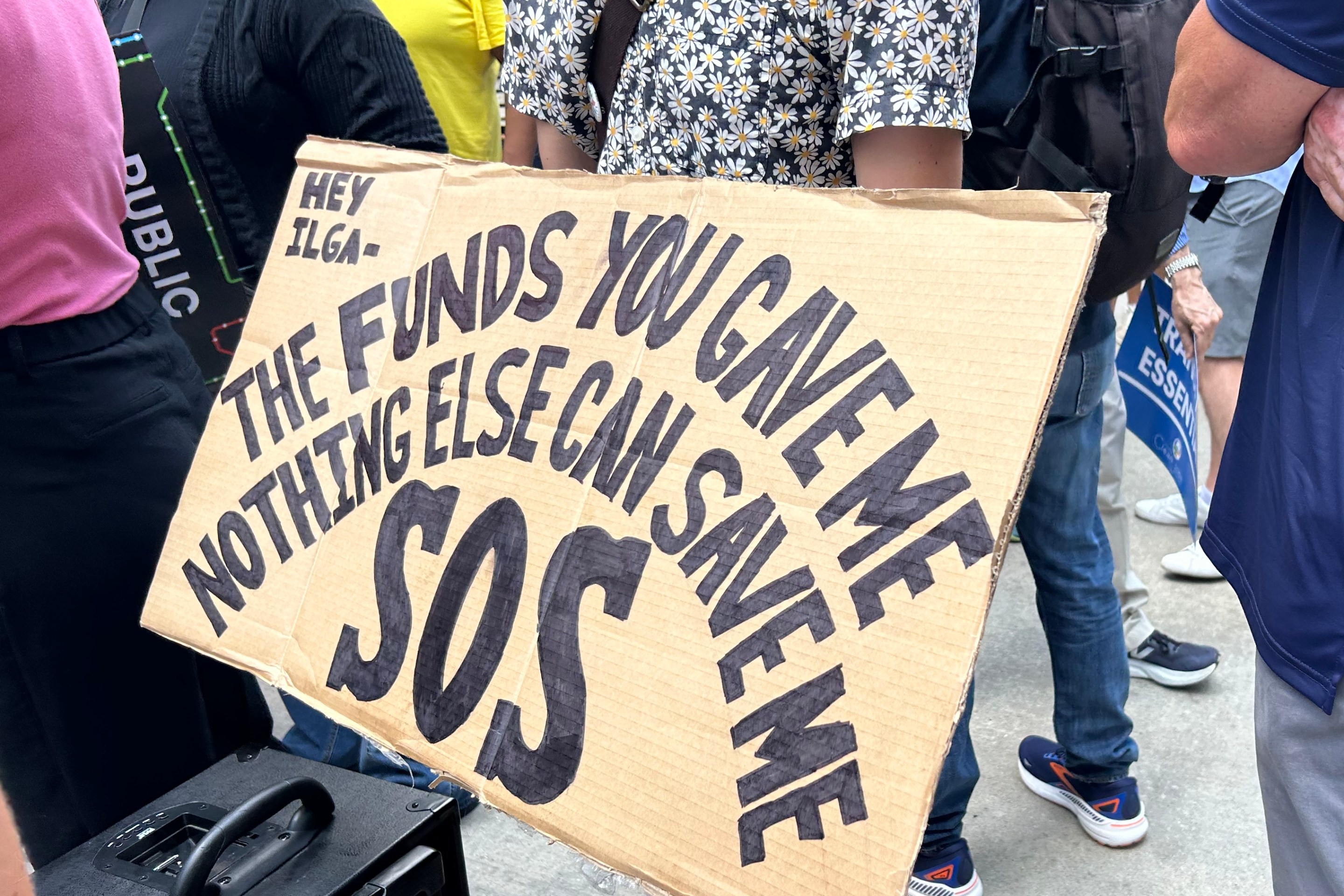Yesterday I made my first presentation as the Southwest Side representative for the Mayor’s Bike Advisory Council. There are eight representatives throughout the city. As representatives, we've been asked to discuss the assets, challenges, and next steps for our region at the quarterly meetings.
My region includes Brighton Park, McKinley Park, Archer Heights, Marquette Park, Gage Park, West Lawn, West Elsdon, Clearing, Garfield Ridge, Back of the Yards, Little Village, and Pilsen. It’s a huge region with neighborhoods varying in demographics and challenges. Much of my region’s neighborhoods are predominately Latinx.
As someone who is still getting to know some of these neighborhoods, I highlighted some assets knowing that there’d be many more I’d learn about down the road. Major parks in the region include Harrison, McKinley, and Marquette. The area also has access to the Pink and Orange lines, in addition to major bus routes like Pulaski, Western, Ashland, Archer, and Cermak. Shopping districts include 26th Street, which is the highest grossing shopping and tax revenue hub in the city after the Magnificent Mile.

Discussing the challenges in the region was a bit tricky because I don’t pretend to know all the challenges, particularly because I just started in my role and am still getting to know the different issues. Based on my experiences living in Little Village, working in Brighton Park, and frequenting Pilsen, I have been able to pick up on some of the overarching themes in some of the region.
Biking on the Southwest Side means not having a lot of options for low-stress routes and also often dealing with poorly lit streets when biking at night. Some of the low-traffic streets that would otherwise be good bike routes, such as 25th Street in Little Village, are riddled with potholes that, ironically, make it stressful to ride there.
As it stands, biking on the Southwest Side requires sharing the road with truck drivers. When I used to bike into Brighton Park to my job working with students from Kelly High School, I would typically have to deal with plenty of truck traffic. I would ride on California Avenue to cross the Sanitary and Ship Canal on a bridge a block south of 31st. Just south of the bridge, truckers would often be turning right to enter an access ramp to the Stevenson Expressway, crossing my path.
Looking back on it, I guess I must have been pretty gutsy because I seldom saw people biking around there. My students considered me a marvel because they didn’t know many people who biked into Brighton Park. I still reminisce about how they used to watch me bike away from the second floor of Kelly.
Groups like the Little Village Environmental Justice Organization have conducted truck counts in the neighborhood to quantify how it impacts the quality of life in the neighborhood. Most recently, Neighbors for Environmental Justice and LVEJO, among other groups, have voiced concerns about a new asphalt plant in McKinley Park bringing more truck traffic and pollution to the Southwest side. Similar concerns about pollution and truck traffic have been raised about the future Hilco warehouse and distribution center, a one-million-square-foot facility, in Little Village at the former Crawford Coal Power Plant site.

The danger of heavy truck traffic in Chicago's industrial neighborhoods was underscored last March, when a semi driver struck and killed high school student Anthony Macedo, 14, as he stood at 51st and Western in Gage Park.
Any conversation about bikeability on the Southwest Side has to take into account residents' real concerns about trucks and pollution. We can’t install bike lanes next to a factory spewing toxins into the environment without considering the risk posed by the poor air quality, or stripe lanes on a road plagued with heavy truck traffic without factoring in that danger. Doing so means failing to take a holistic approach to community planning, and it continues the legacy of the environmental racism and inequity our communities have faced for too long.
As someone who has been working and living on the Southwest side, I see environmental justice as being a core part of starting a conversation about mobility justice and how we can makes Southwest Side neighborhoods more walkable, bikeable, and transit-friendly.





